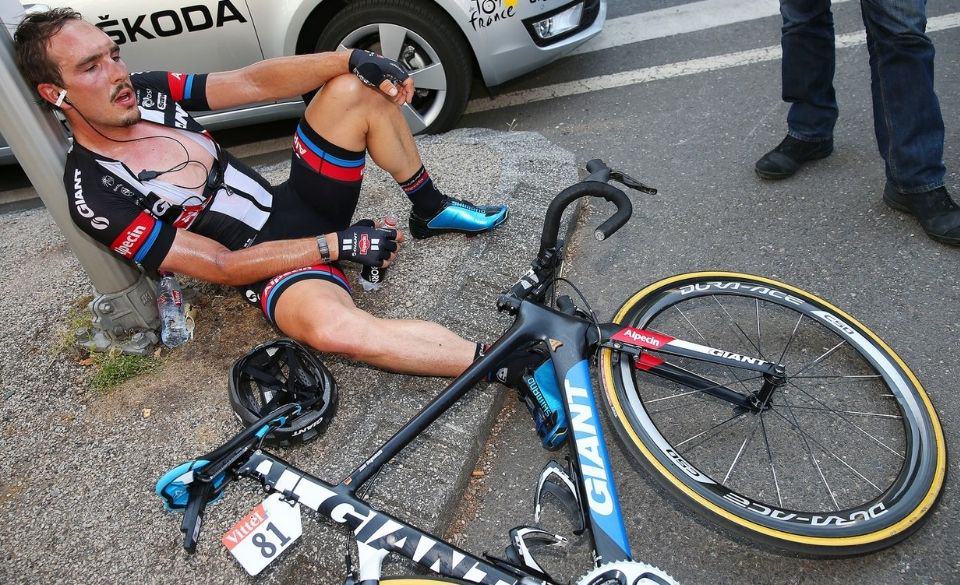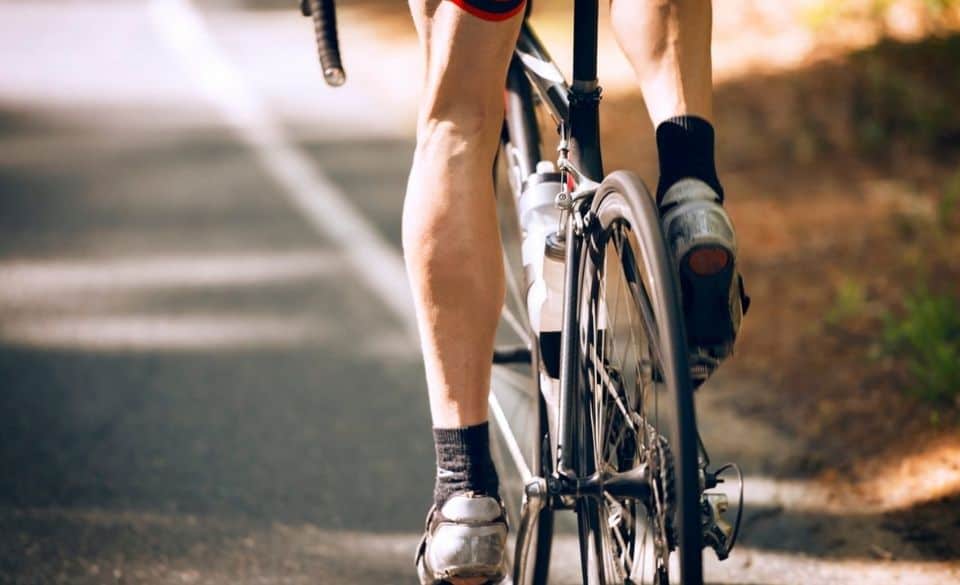
Bonking While Cycling? A Complete Guide To Recover From Bonking
Page Contents
If you have never experienced bonking while cycling before, it can be an absolute nightmare. When your miles from home and have run out of energy, it can turn into one of the biggest struggles you may have on the bike.
So what causes this? and was does bonking mean? In this article, we look at what causes bonking on the bike and how you can prepare yourself beforehand to stop this from happening.
Bonking While Cycling? Here’s What To Do
First, bonking is a phrase related to running out of energy on the bike. The actual term for such a thing is called hypoglycemia.
Hypoglycemia (or bonking) happens when you exhaust all of the body’s glycogen stores. Essentially what happens then is you are only left a small amount of blood glucose for the body to run off.
Often this happens to cyclists during long rides or rides where they have not fuelled enough before.
Bonking while cycling causes a massive drop in energy levels that prevent the rider from holding the same speed or power they had moments ago. Often this will cause a dramatic loss of speed where the rider can sometimes even struggle to turn over the pedals.
However, bonking on the bike can come on at different levels depending on the circumstances. For riders that experience light hypoglycemia, they may still be able to continue to hold the pace.
For riders affected by severe bonking often find themselves struggling to keep focus. The vision then starts to get disturbed, and brain function starts to decline. Pair this with a dramatic loss in energy and power, and the rider is forced to stop.
Sometimes this may not even be the choice of the rider as the body goes into complete shutdown.
So, knowing that, what are the symptoms of bonking?
– Sudden drop in energy levels
– Loss of focus
– Loss of vision or impairment.
– Cold flashes throughout the body.
– Lack of power
– Shaking
– Sweating
If you experience the above symptoms, the first thing you must do is provide the body with simple carbohydrates. Simple carbs will help the body absorb the carbohydrate faster.
Energy products such as energy gels, drinks, and sometimes candy or coke can help most of the time.
Unfortunately, complex carbohydrates take too long for the body to process into glucose. So complex carbs are only recommended if you don’t have access to faster absorbing carbohydrates.
Ideally, if you can identify the symptoms early, you may able to prevent hypoglycemia from happening. While this is usually too late, it will prevent you from having to come to a complete standstill.
For the most extreme cases of bonking, you should stop cycling immediately and start to refuel. This will allow your energy levels to return to normal again, usually within 30 minutes or so.

What Does Bonking Feel Like?
If you have never experienced bonking before, it is an unpleasant experience. So, what does bonking feel like?
Symptoms vary between people and the severity of the bonk. But what you can expect to experience is weakness, tiredness, dizziness, and cold flashes. However, in worst-case scenarios shaking, loss of focus, heart palpitations, and hunger may happen.
Unfortunately, severe bonking can lead to a decline in brain function as well. The decline in brain function is caused by the lack of glucose and often causes the cyclist to become anxious and sometimes confused.
However, at the height of extremes, you may be forced into a coma. Although this is not as common as other symptoms, it can still happen.
After reading the above facts, it is important to understand that bonking should not be taken lightly. So next time your out riding your bike, make sure you take enough food to keep your energy levels up.
How To Recover From Bonking?
If you are unlucky enough to run out of energy on a ride, what should you do to recover?
In most simple cases, providing the body some much-needed carbohydrates will get you back to pedaling fairly quickly.
For moderate symptoms, you will need to refuel the body by ingesting simple carbohydrates straight away. You will also need to hydrate the body to restore fluid balance.
Nutrition that works well when you have bonked are:
– Coke
– Energy Gels
– Energy Bars
– Candy
– White bread with Jam
– Cookies
Usually, anything with a high level of sugar will give you the much energy boost to keep you going. However, it is still vital to provide the body with complex carbohydrates once you are back riding. Doing so will help keep the energy levels stable for the rest of the ride.
For other cases when you have extreme symptoms you will need to spend 30-60 minutes off the bike until the symptoms have resided. You will still need to replenish your glycogen levels, as the required rest will only allow the brain function to return to normal.

Signs of Glycogen Depletion
Bonking, lack of energy and loss of power all relate to signs of glycogen depletion. Below are some of the signs and symptoms of glycogen depletion that you may experience as a cyclist or athlete.
Decreased Strength and Power
Since muscles rely heavily on muscle glycogen to pedal, once glycogen levels start to drop, you may experience a decline in strength and power.
Increased Rate of Perceived Exertion (RPE)
When you are start emptying your glycogen levels, you may experience an increased rate of perceived exertion. This means that what would usually feel easy will become much more difficult. For the cyclist that uses a power meter, often the power will struggle to reach normal levels.
Change in size and feel of muscles
A well-replenished glycogen store in a cyclist shows fuller and larger muscles (often in the legs). If you are experiencing glycogen depletion, the fullness and size of the muscle may change. That is because glycogen-rich muscles tend to hold much more water than depleted ones.
Change in weight
Athletes that have low glycogen levels can sometimes experience large fluctuations in weight. Although other factors may play a role, weight change is often related to low glycogen levels, so it is important to track regularly.
Poor Recovery
Although poor recovery can be affected by sleep, training, diet, and other factors. Lack of recovery has also been linked to low levels of glycogen in the muscle. If the cyclist, or any athlete for that matter, fails to replenish muscle glycogen after every workout, recovery tends to decline. The athlete is then going into the next session in a depleted state, thus starting a downward spiral.



